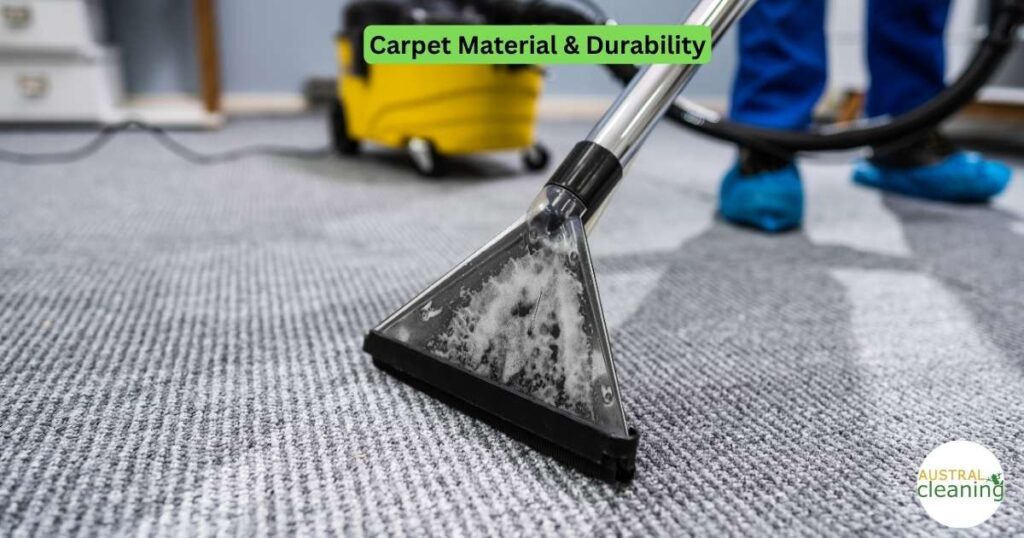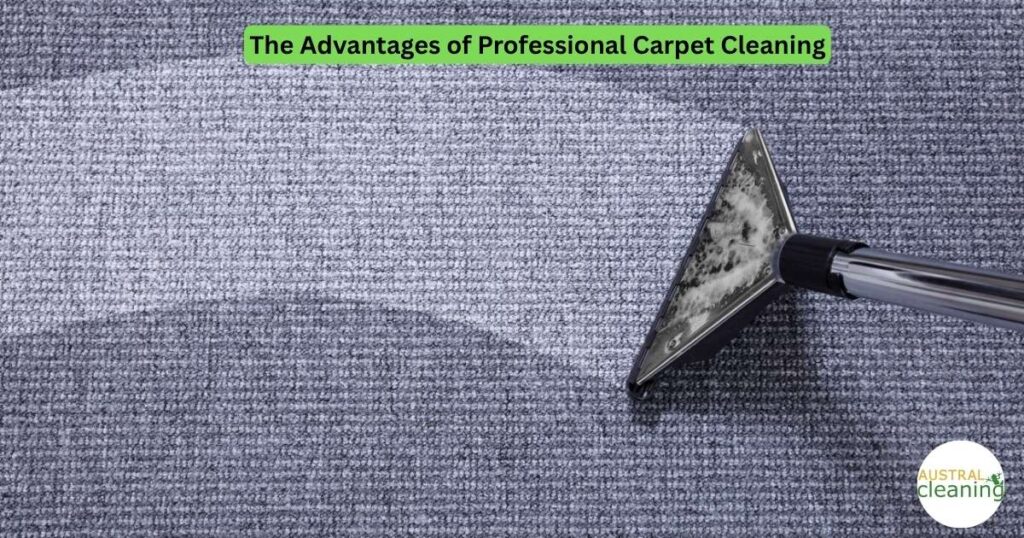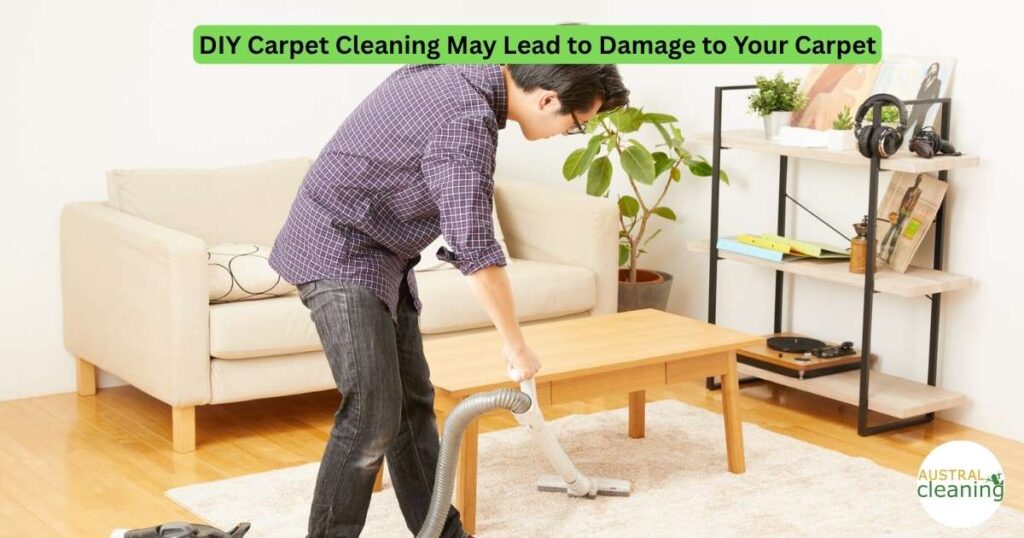Carpets are a key part of any interior — whether in an office or a home — adding warmth, comfort, and style to a space.
However, the way carpets are cleaned differs significantly between commercial and regular (residential) settings. Many business owners often assume that all carpet cleaning methods are the same, but that’s far from true.
Understanding the difference between commercial carpet cleaning vs. regular carpet cleaning can help you protect your investment, extend the carpet’s lifespan, and maintain a healthy environment.
Understanding Usage & Foot Traffic

The biggest difference between commercial carpet cleaning and regular carpet cleaning comes down to usage and foot traffic.
In commercial spaces such as offices, hotels, retail stores, and schools, carpets endure constant foot traffic every single day. They are exposed to dirt, mud, coffee spills, and other stains brought in by employees and visitors.
On the other hand, residential carpets experience lighter and more predictable use, usually within smaller areas.
Because of this, commercial carpets require heavy-duty cleaning equipment and stronger cleaning solutions that can handle high volumes of grime without damaging the fibers.
Professional cleaners use industrial-grade extractors and hot-water systems to deep clean these carpets, while regular home carpet cleaning often uses smaller, less powerful machines.
Carpet Material & Durability

Commercial carpets are built differently from residential ones. They’re designed with low pile fibers and dense construction to withstand heavy use, rolling chairs, and frequent cleaning.
Residential carpets, however, focus more on comfort and aesthetics — often featuring plush, soft fibers that feel great underfoot but are more delicate.
Because of this, commercial carpet cleaning techniques must be carefully matched with the material type.
Cleaners often use methods like encapsulation cleaning or steam extraction, which remove dirt without soaking the carpet excessively.
Regular carpet cleaning at home, on the other hand, may rely on gentler shampoos or spot treatments for stains and pet odors.
Cleaning Frequency & Maintenance

Another major difference between commercial carpet cleaning vs. regular carpet cleaning is how often they should be cleaned.
- Commercial carpets usually require professional cleaning every 3–6 months, depending on the industry and traffic level. High-traffic areas like hotel lobbies or office hallways may even need monthly maintenance.
- Residential carpets can typically go 6–12 months between professional cleanings, assuming regular vacuuming and spot care are done at home.
Many businesses also adopt a maintenance plan, where professional cleaners rotate through zones to keep the entire workspace fresh throughout the year.
This ensures that dirt and dust never accumulate to a level that damages carpet fibers or affects air quality.
Why Professional Carpet Cleaning is Essential

Whether it’s commercial or regular, professional carpet cleaning offers benefits that simple vacuuming or DIY methods can’t match. Carpets act like filters, trapping allergens, dust, and bacteria deep within the fibers.
Professional cleaners use high-temperature steam extraction, eco-friendly detergents, and industrial suction power to remove these contaminants effectively.
For businesses, this isn’t just about cleanliness — it’s also about protecting your brand image and employee health. A clean carpet makes your office look more professional and helps reduce allergic reactions, odors, and airborne pollutants.
In homes, professional cleaning keeps your carpet looking vibrant while improving indoor air quality — something especially important for families with pets or children.
The Advantages of Professional Carpet Cleaning

Here’s why hiring professionals — especially for commercial carpet cleaning — is a smart investment:
- Deep Dirt Removal: Professional machines extract debris that regular vacuums leave behind.
- Faster Drying Times: Commercial-grade dryers minimize downtime in offices or shops.
- Stain Protection: Technicians apply protective coatings to resist future spills.
- Extended Lifespan: Regular professional cleaning prevents fiber wear and tear.
- Better Air Quality: Removing built-up dust and allergens improves indoor environments.
In essence, professional carpet cleaning extends your carpet’s life while maintaining a cleaner and healthier space — whether at home or in your business.
The Pros and Cons of DIY Carpet Cleaning
While DIY carpet cleaning might sound appealing for saving money, it’s important to weigh the benefits and drawbacks carefully.
The table below highlights how DIY cleaning compares against professional carpet cleaning in terms of results, safety, and cost-effectiveness.
| Aspect | Pros of DIY Carpet Cleaning | Cons of DIY Carpet Cleaning |
| Cost | Lower upfront cost than hiring professionals. | Can become expensive if equipment or solutions cause damage. |
| Convenience | Easy for small areas or spot cleaning. | Time-consuming and physically demanding for large spaces. |
| Equipment Power | Readily available rental machines. | Limited suction and heat lead to shallow cleaning results. |
| Drying Time | Depends on equipment used. | Often leads to over-wetting, increasing mold or mildew risk. |
| Cleaning Quality | Works for light stains and surface dirt. | Ineffective for deep grime, allergens, or set-in stains. |
| Carpet Safety | Suitable for very mild cleaning jobs. | Incorrect cleaning agents can discolor or damage carpet fibers. |
| Long-Term Results | Temporary improvement in appearance. | Residue buildup attracts dirt faster, reducing carpet lifespan. |
Summary:
DIY carpet cleaning can be a short-term solution for small stains or touch-ups, but for deeper hygiene and long-lasting results, professional carpet cleaning is the safer and more efficient choice — especially for commercial settings.
DIY Carpet Cleaning May Lead to Damage to Your Carpet

One of the biggest dangers of DIY cleaning is carpet damage. Using the wrong cleaning solutions or equipment can cause discoloration, fiber shrinkage, or residue buildup.
Residue left behind by low-quality shampoos attracts more dirt, making carpets look dull again in a few days.
In commercial environments, this can be costly — as replacing large sections of carpet is far more expensive than scheduling routine professional cleaning.
For homeowners, it may mean losing the softness or color vibrancy of your carpets permanently.
The takeaway? Leave deep cleaning to professionals who understand the right techniques for both commercial and residential carpets.
Final Thoughts: Which One Do You Need?

When comparing commercial carpet cleaning vs. regular carpet cleaning, the biggest differences come down to scale, frequency, and cleaning power.
Commercial carpets need stronger equipment and more frequent maintenance, while residential carpets focus on comfort and aesthetic appeal.
If you manage a business or office, investing in professional commercial carpet cleaning not only enhances your company’s image but also protects your flooring and promotes a healthier environment for staff and customers alike.
And if you’re a homeowner — professional cleaning once or twice a year keeps your carpet fresh, soft, and allergen-free for years to come.


Leave A Comment